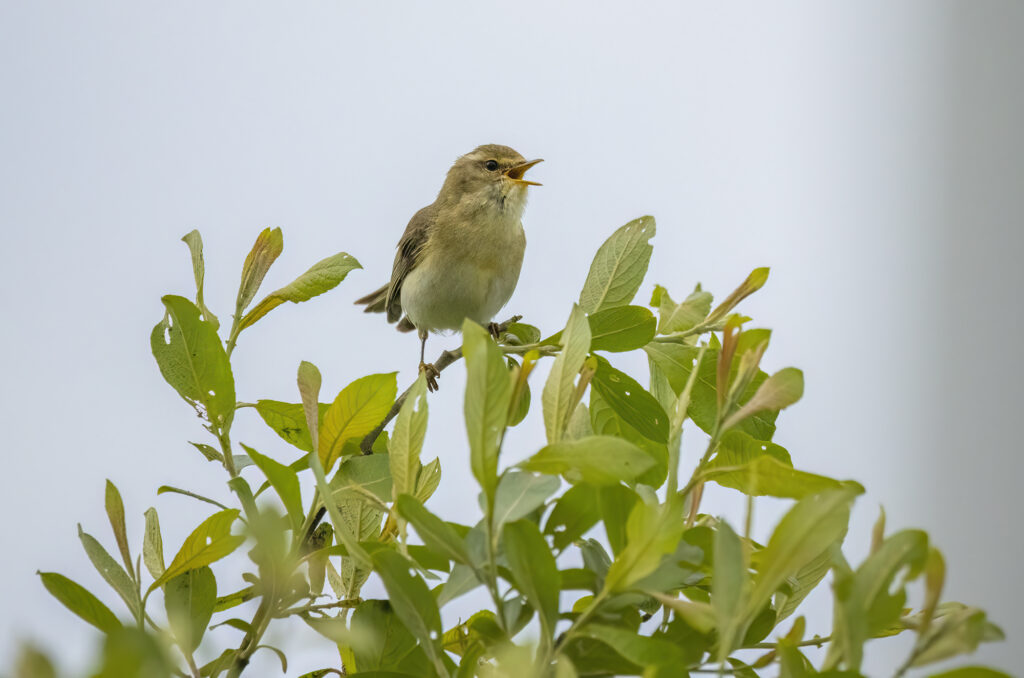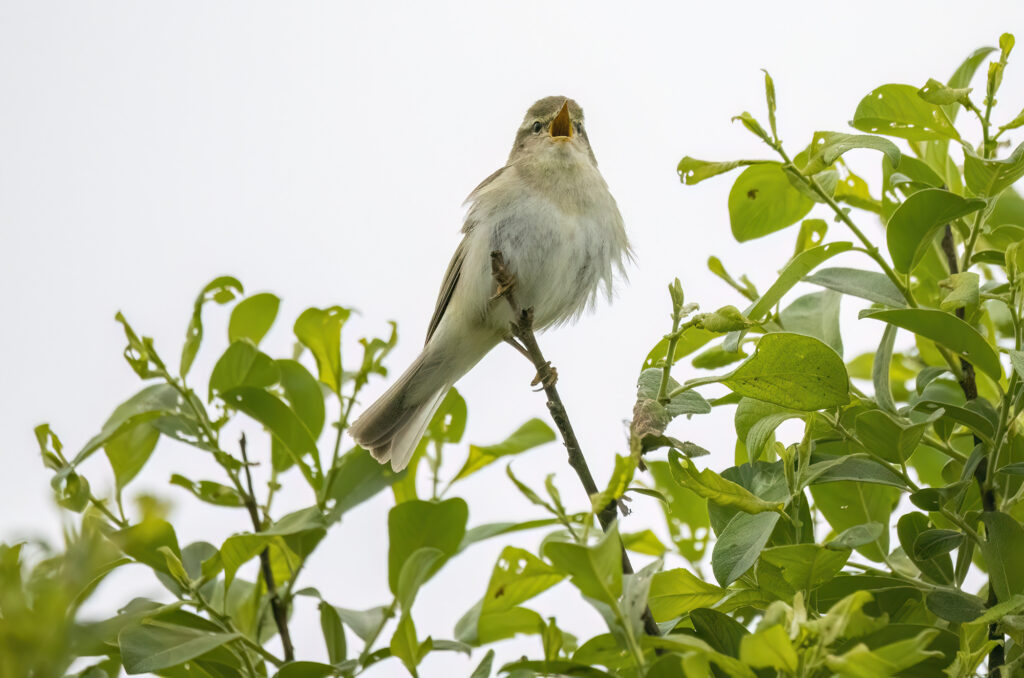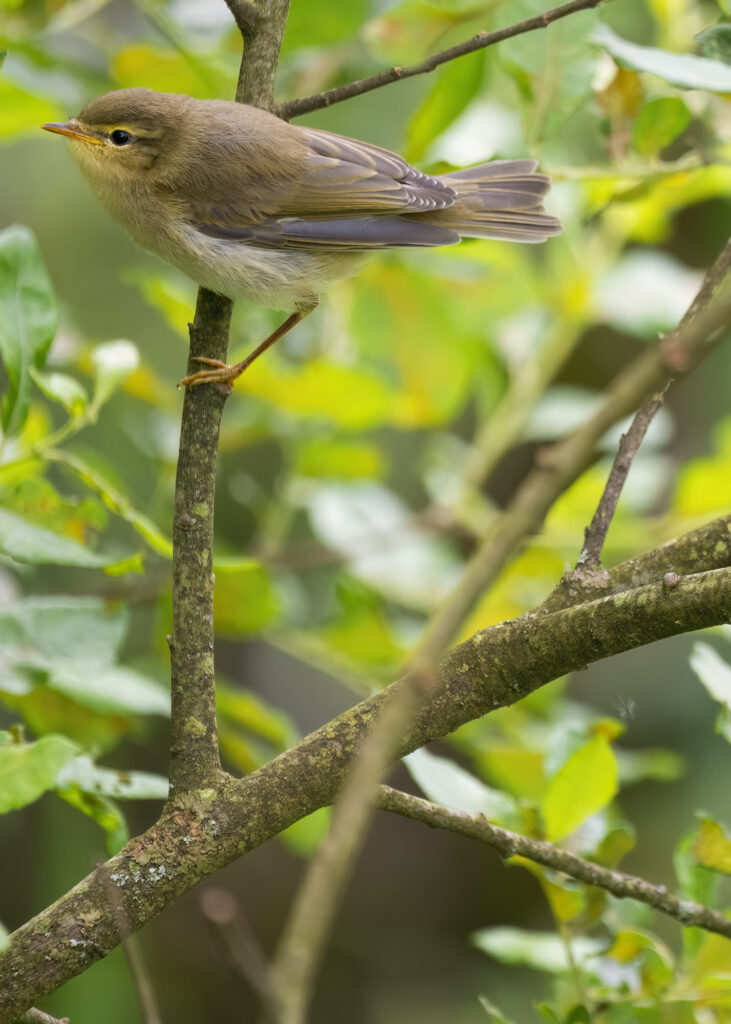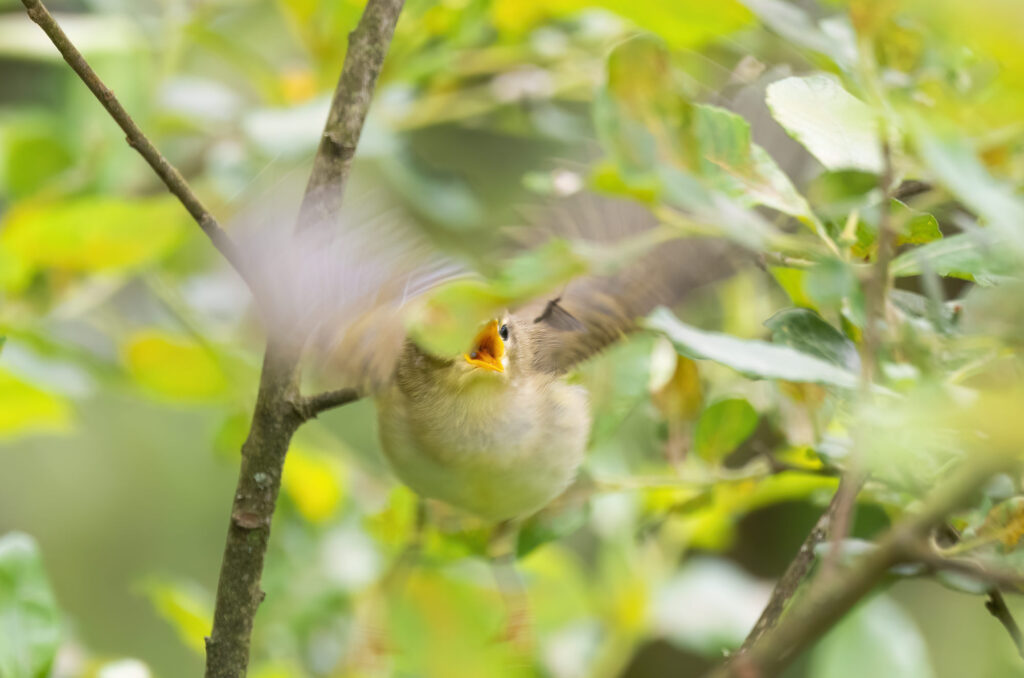An olive-brown and creamy flash in the branches is the first sign, and then it’s a waiting game. Will this slender, streamlined bird – perfectly camouflaged in the spring and summer foliage – open its beak and sing?
You see, the willow warbler is a small, delicate bird with green-tinged upperparts and pale yellow underparts. But the chiffchaff is also a small, delicate bird with green-tinged upperparts and pale yellow underparts. The willow warbler has a more elongated primary projection (the distance the wing feathers extend past the bird’s body) than the chiffchaff, giving it a slightly longer-winged appearance. But that’s not an identification feature you’re likely to be able to work out in the field – at least, not if you’re me. You could try to identify the willow warbler from its paler flesh-coloured legs, compared to the chiffchaff’s dark grey legs, but good luck getting it to sit still long enough on a prominent perch to get a good enough view of this feature. No, the best way to tell a willow warbler from a chiffchaff is their wildly different songs.

The willow warbler’s song has a complex cascading structure, starting high and descending in pitch as it progresses, and a gentle, lilting tone. This song is often heard from treetops or other high perches, as males sing to establish their territory and attract females. The chiffchaff, on the other hand, has a repetitive “chiff-chaff” call, which can feel like a taunt when it’s coming from a nearby tree and you can’t spot the bird in question. And after you’ve heard it about fifty times in a row, it can start to feel like the bird is trying to drive you mad. At least the willow warbler has the decency to sing rather than do the equivalent of shouting “ner ner ner na ner ner” like a sneering child.*
The chaffinch’s song can add to the confusion, as it is also made up of a tumbling series of notes like the willow warbler’s. The part to look out for is the little flourish at the end of the chaffinch’s song, which the willow warbler doesn’t have. The chaffinch’s song also sounds more strident and less melodic.

As this blog is supposed to shine a spotlight on the willow warbler, I’ll stop comparing it to other birds and focus on why the UK is a hotspot for this species, with more than two million pairs nesting here every year. They typically arrive from southern Africa in April and begin their breeding season almost immediately. Upon arrival, the males stake out their territories and start singing to attract a mate. I captured the footage below at Whitelee Windfarm in May, where I was treated to several willow warblers singing from prominent perches.
Willow warblers are ground nesters, building domed nests hidden among dense vegetation. Scotland offers the perfect habitat for them, thanks to its vast expanses of woodland, heathland, and scrub – providing ample opportunities for nesting and feeding. The willow warbler diet is primarily made up of invertebrates, such as small insects, spiders, and caterpillars, which are abundant during the months they are here.

And then, before you know it, they are leaving us, and the sound of their song disappears from the dense summer tree cover. By late July or August, the young willow warblers are fully fledged and ready to embark on their first migration back to Africa. Before the adults depart, they have their post-breeding moult – when they replace their worn feathers in preparation for the long journey south, which begins between July and September. Willow warblers are unusual in the bird world because they moult their feathers twice a year – once at their breeding ground and once at their wintering ground – and it remains a mystery why they do this.

The willow warbler is a common visitor to the UK, yet it can still be tricky to identify and photograph. Tuning into its distinctive song is the key to capturing this elusive little bird.
*I love chiffchaffs, honestly.

